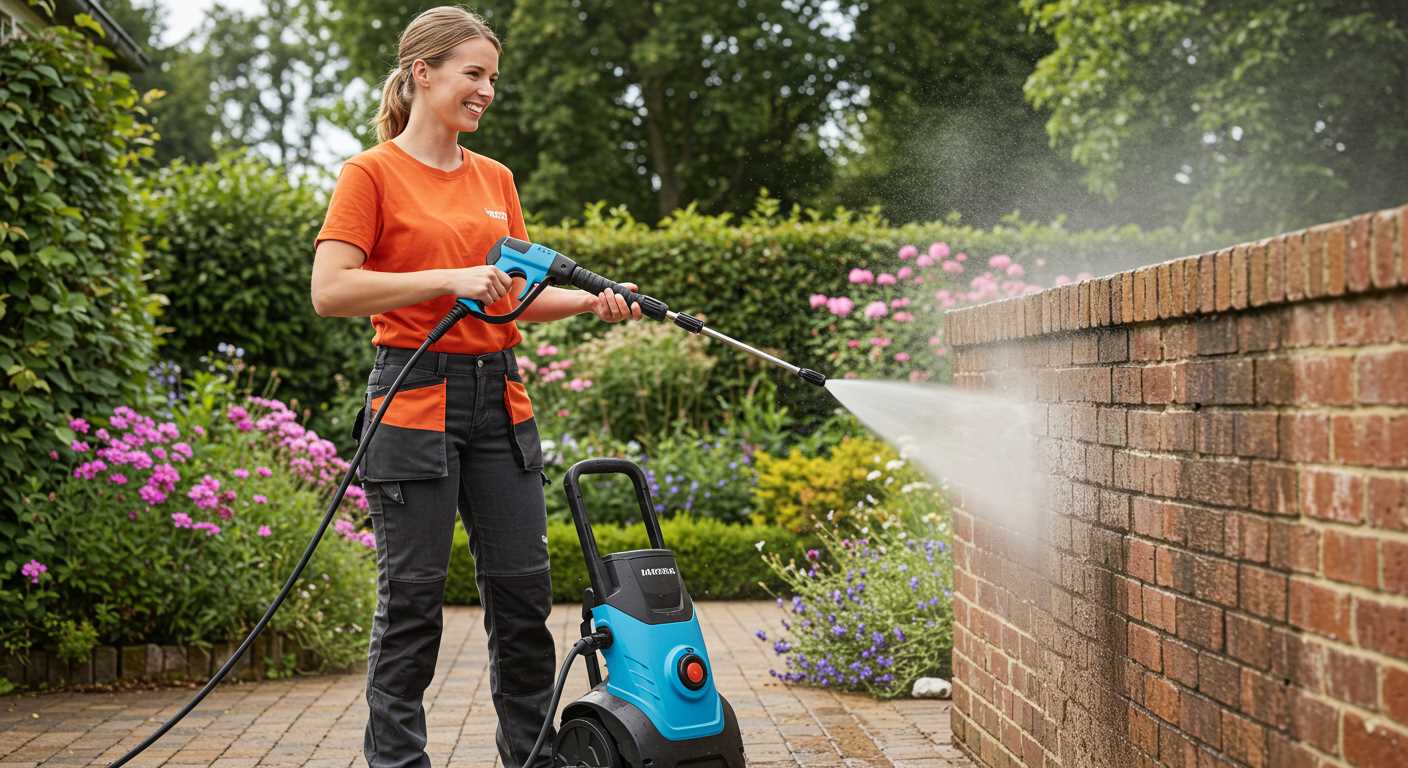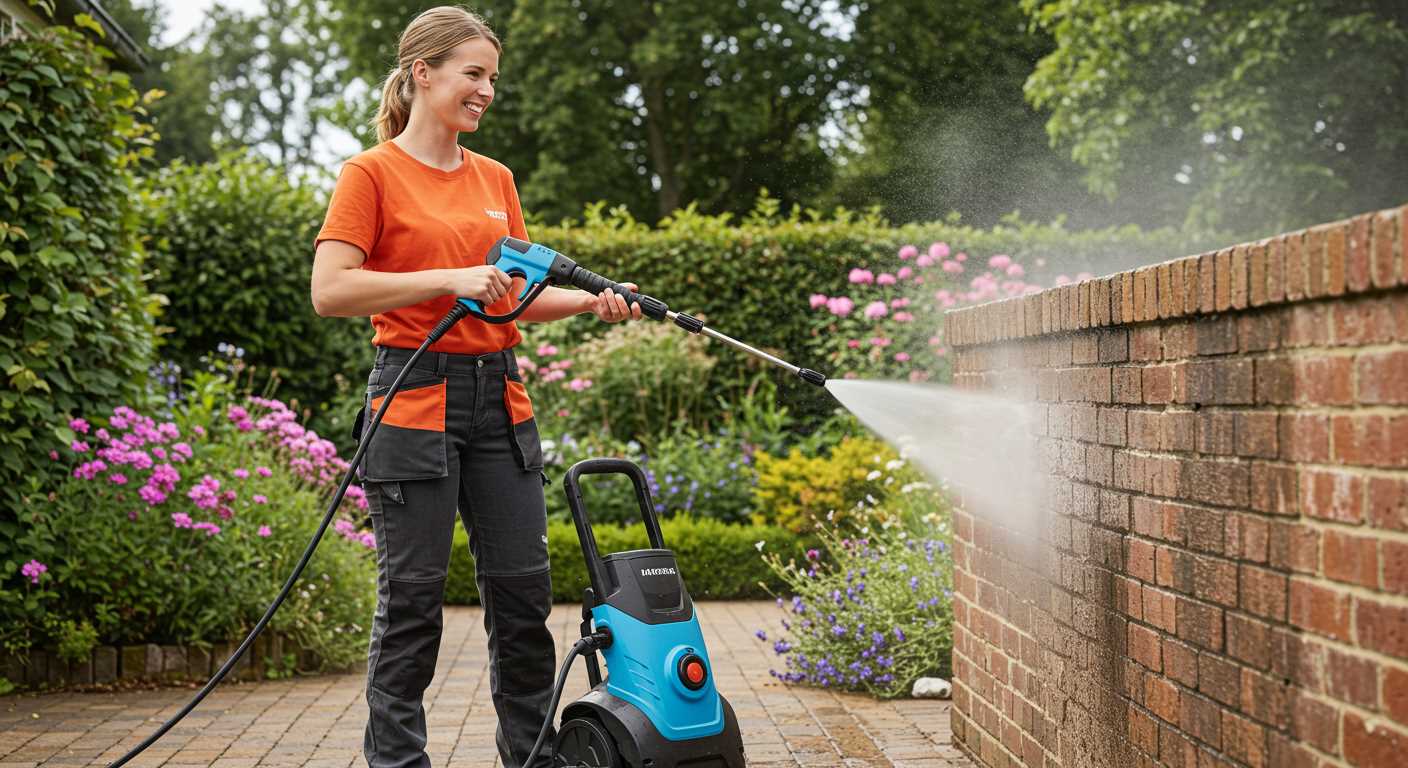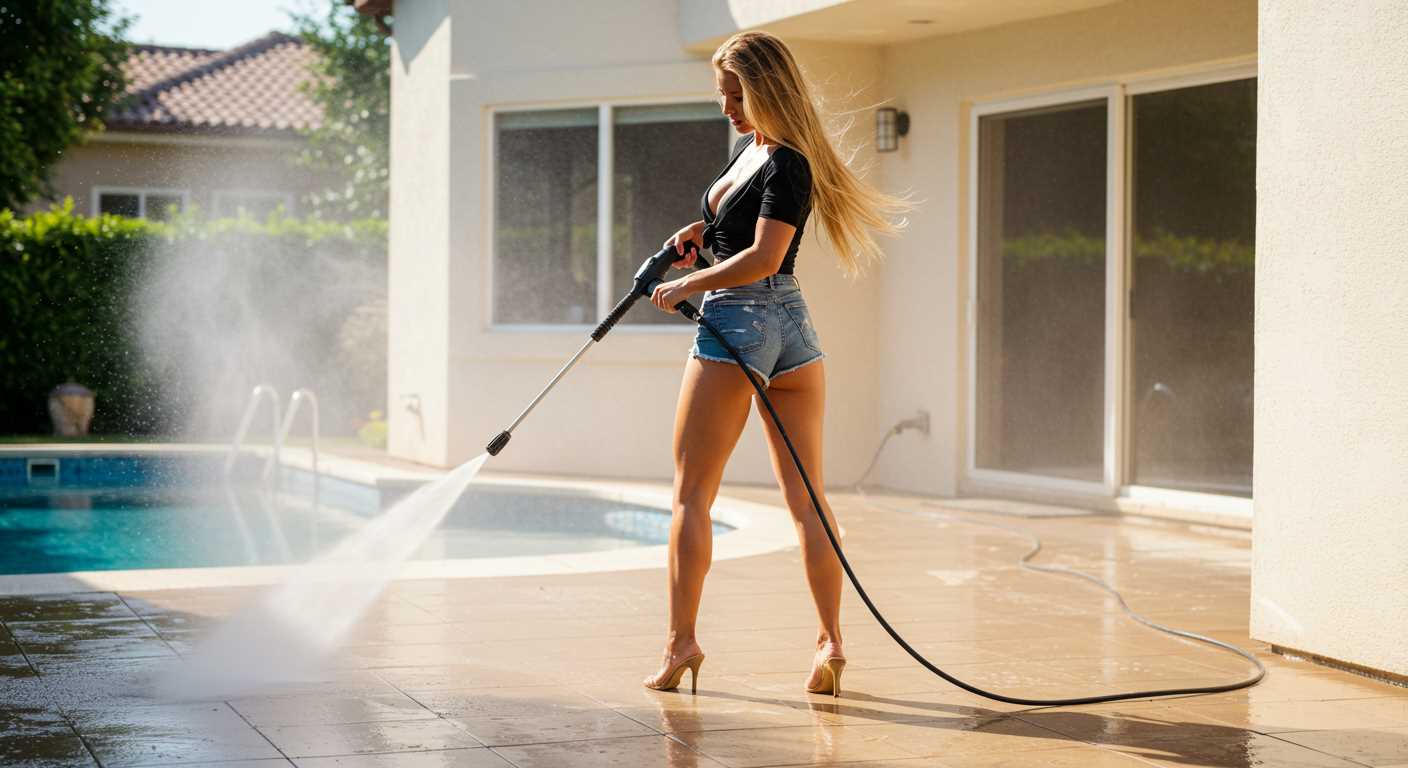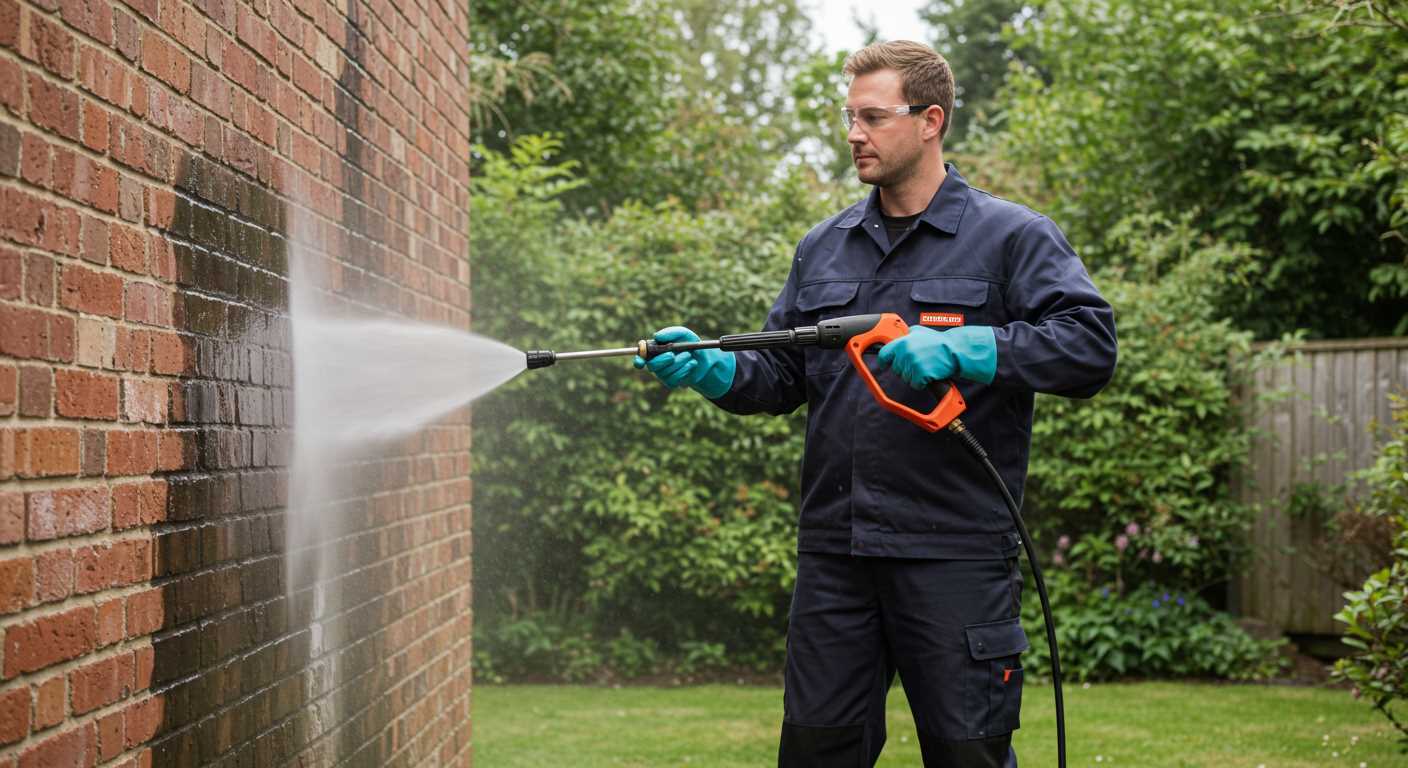


First off, if you notice water shooting out from your cleaning line during use, it’s time to take action. From my experience, the most common culprits are small punctures or frays that can develop over time. Identifying the source of the leak is crucial. A simple visual inspection often reveals the problem area. If you see any cracks or worn spots, that’s where you want to focus your attention.
One effective method I’ve used involves the application of a durable tape specifically designed for high-pressure environments. Wrap it tightly around the damaged section, ensuring it covers at least a couple of inches on either side of the imperfection. This can provide a temporary fix until you opt for a more permanent solution.
If the damage is extensive, you might want to consider replacing the affected section entirely. Depending on the model you own, many manufacturers sell replacement segments that can be easily installed. Just remember to match the diameter and pressure rating to ensure compatibility. In my experience, taking the time to choose the right materials pays off in the long run, reducing the likelihood of future mishaps.
Lastly, regular maintenance is key. After each use, inspect your lines for signs of wear. Storing them properly, away from direct sunlight and harsh weather, can significantly extend their lifespan. Trust me, investing a little time in upkeep saves you from bigger headaches down the line.
Fixing a Dripping High-Pressure Cleaning Line
Begin by identifying the source of the issue. Inspect the entire length of the cleaning line, paying close attention to any visible cracks or holes. A simple visual examination often reveals the problem area.
Materials Needed
- Replacement section of tubing (if necessary)
- Hose clamps
- Rubber or silicone sealant
- Utility knife or hose cutter
- Sandpaper
- Cloth for cleaning
Steps to Address the Issue
- After locating the damage, clean the area surrounding it. Use a cloth to remove dirt or debris, ensuring a good bond for any sealant.
- If the damage is minor, apply rubber or silicone sealant directly over the crack. Make sure to smooth it out evenly and allow adequate drying time as per the product instructions.
- For larger breaks, cut out the damaged section with a utility knife, ensuring clean edges. Measure the removed section to get an accurate length for the replacement tubing.
- Insert a new piece of tubing, ensuring it fits snugly. Use hose clamps on either side to secure it tightly, preventing any future leaks.
- Test the connection by running the system at low pressure first. Check for any signs of water escaping. If all is well, gradually increase to normal operating pressure.
Regular inspections can prevent future issues. Make it a habit to visually check your equipment before and after each use. This practice can save time and money in the long run.
Identifying the Source of the Leak
Begin by examining the entire length of the tubing. Look for any visible cracks, abrasions, or punctures. A good light source can help you spot these imperfections more easily. If you notice any wet spots, that’s a clear sign of trouble.
Inspect the connectors where the tubing meets the machine and the nozzle. Sometimes, leaks occur due to loose fittings. Check if these connections are tight. If they are, but the leak persists, the issue may be with the seals or O-rings, which can wear out over time.
Conduct a pressure test by running the unit while observing the tubing. Pay close attention to bends or kinks; these areas are often weak points where leaks can develop. If you spot bubbling or spraying water, you’ve pinpointed the exact location.
Use soapy water to help identify less obvious leaks. Spray the solution along the tubing and joints. Bubbles will form at the site of any leaks, making them easier to spot. This method is particularly useful for small, hard-to-see cracks.
| Potential Leak Sources | Signs to Look For |
|---|---|
| Cracks in the tubing | Visible damage or wet spots |
| Loose connections | Water spraying at fittings |
| Worn seals or O-rings | Persistent dripping at joints |
| Bends or kinks | Uneven water flow or pressure loss |
By systematically checking these areas, you can effectively identify the source of the issue. It’s all about being thorough and observant. A bit of patience during the inspection can save you time later on.
Gathering Necessary Tools and Materials
For a successful fix, gather these items: a replacement section of tubing, hose clamps, a utility knife, and some waterproof tape. You might also want a pair of pliers and a wrench, especially if the fittings are stubborn. A bucket could come in handy to catch any excess water, too.
Choosing the Right Replacement Section
Select the right tubing based on the diameter of your current line. Most units use either 1/4-inch or 3/8-inch hoses. If you’re unsure, measure the inner diameter of your existing line. A quick trip to your local hardware store will help you find a suitable option.
Additional Materials
Waterproof tape is useful for securing connections and preventing future issues. If you’re working outdoors, consider having some silicone sealant on hand for extra protection against moisture. This can be particularly helpful if you notice any wear around fittings.
Draining and Disconnecting the Hose
Before tackling any issues with the tubing, ensure that all water is drained. First, turn off the machine and disconnect it from the power source. Next, engage the trigger on the spray gun to release any remaining water pressure. This simple step prevents accidental sprays and keeps you safe while working.
Once that’s done, locate the connection points where the tube attaches to the unit and the spray gun. These connections can vary by model, so use the appropriate tools to loosen them. A wrench usually does the trick, but be cautious not to over-tighten it during reassembly.
After disconnecting, allow the tubing to drain completely. Hang it up or lay it flat to facilitate this process. Standing water can lead to mildew or internal corrosion, making future use problematic. If you notice any water pooling, give it a little time to clear out.
Inspect the fitting and connector areas for any signs of wear–this is where most issues can pop up. Cleaning these spots with a cloth can help ensure a secure connection later on. Once everything is drained and disconnected, you’ll be ready to move on to the next steps without any hassle.
Inspecting the Hose for Damage
Start with a thorough visual examination. Look for obvious signs such as cracks, abrasions, or bulges. These indicators often reveal weaknesses that could lead to issues during operation. When I was troubleshooting a friend’s unit, a small, barely noticeable crack caused a significant drop in performance. It’s easy to overlook such details, but they matter.
Check Fittings and Connectors
Inspect the fittings at both ends of the line. Sometimes, leaks may stem from loose connections rather than the line itself. Tightening these can often resolve minor problems. In my experience, a simple twist with the right tool can make all the difference. Don’t hesitate to disassemble the fittings for a closer look; you might find debris or worn seals that need replacement.
Look for Discoloration
Discolouration can be a telltale sign of wear. A hose that has faded or changed colour may be more susceptible to failure. I recall a case where a colleague insisted his equipment was functioning correctly, but the hose showed clear signs of UV damage. Replacing it before a critical job saved us from a potential disaster.
If you’re curious about the details of various components, check out a digital camera is composed of how many tiny pixels. Understanding the intricacies of equipment helps in maintenance and ensures longevity.
In conclusion, a meticulous inspection can help catch issues early, saving time and money in the long run. Don’t rush this step; it’s an investment in the reliability of your cleaning setup.
Applying Hose Sealant or Tape
For quick fixes, using a quality sealant or tape can be a game-changer. I’ve often turned to these methods when dealing with minor issues on the job. Here’s how to do it right.
Choosing the Right Products
Opt for a sealant specifically designed for high-pressure systems. Look for options that are water-resistant and can withstand varying temperatures. Teflon tape is another reliable choice; it’s easy to apply and works wonders for small leaks.
Application Steps
- Ensure the area around the leak is clean and dry. Use a cloth to wipe away any moisture or debris.
- If you’re using sealant, apply a thin layer directly over the leak. Make sure to cover it completely, allowing it to seal properly.
- For Teflon tape, wrap it around the threaded areas of the connection where you suspect the issue lies. Overlap the tape slightly, ensuring a snug fit.
- Allow any sealant to cure as per the manufacturer’s instructions before reattaching the system.
After applying the chosen method, reconnect everything and test the system. I’ve found that these simple solutions can often extend the life of your equipment significantly. Always keep sealant and tape handy for those unexpected moments on the job.
Replacing Damaged Sections of the Hose
Cut out the compromised section of the tubing using a sharp utility knife. Make sure to trim it straight to ensure a clean connection later. I recall a time when I was working on an older model and had to replace a section that was frayed. The precision in the cut made all the difference in achieving a tight seal.
Next, measure the diameter of the tubing. This is vital for selecting the correct replacement piece. I once overlooked this step and ended up with a connector that didn’t fit snugly, causing more issues down the line.
Purchase a new segment of tubing that matches the diameter and length of the removed section. Many hardware stores stock various sizes. I prefer to take the old piece with me for comparison, just to avoid any guesswork.
Once you have your replacement, use a hose clamp to secure the new section to the remaining tubing. Position the clamp about an inch from the end of the tubing for a solid grip. I often find it helpful to tighten the clamp with a screwdriver to ensure it’s secure. A loose connection here can lead to future mishaps.
After securing everything, test the connection by running water through the entire setup before using it again. This prevents unpleasant surprises during operation. I learned this the hard way when I didn’t check and ended up with a minor flood in my workshop.
Testing the Hose for Leaks After Repair
After completing the maintenance on your water delivery line, it’s critical to confirm that everything is functioning properly. Begin by reconnecting the line to the power source and allowing water to flow through it. Observe for any signs of moisture near the repaired areas. A good approach is to run the unit at low pressure first, gradually increasing it while monitoring the joints and seals.
Visual and Tactile Inspection
As you test, closely inspect the surface. Look for any bubbling or water escaping from the connections. A tactile check can also be beneficial; run your fingers along the repaired segments to feel for dampness. If you detect any moisture, it may indicate that the seal isn’t holding as it should. In such cases, you may need to revisit the repair steps.
Conducting a Pressure Test
Perform a pressure test by briefly operating the equipment at full capacity. This test will help reveal any weaknesses in the repairs, as higher pressure often exposes flaws that lower pressure may not. If there’s no leakage during this period, your efforts have likely succeeded. For those looking for a compact solution, consider a small pressure washer for home use, which can also be an effective tool for smaller tasks.
By ensuring everything is watertight post-repair, you can confidently proceed with your cleaning tasks. Consistent checks and maintenance will extend the lifespan of your equipment, allowing for continued efficiency in your cleaning routines.
Maintaining Your Pressure Washer Hose to Prevent Future Leaks
Regular upkeep of your cleaning equipment’s tubing extends its lifespan and keeps it functioning optimally. After years of working with various models, I’ve found that simple maintenance routines can significantly reduce the risk of issues down the line. Start with routine visual inspections for any signs of wear, such as cracks or fraying. Catching these early can prevent larger problems later.
Proper Storage Techniques
Storing the tubing correctly is as important as maintaining it. Avoid coiling it too tightly, as this can create stress points that lead to breaks. Instead, use a reel or hang it loosely to prevent kinks. Always keep it out of direct sunlight and extreme temperatures to avoid material degradation, which I’ve seen happen more times than I can count.
Cleaning and Care
After each use, rinse the tubing with clean water to remove any detergent residues or debris. This simple step helps prevent corrosion and keeps the interior clean. Additionally, consider applying a silicone-based lubricant to the fittings occasionally. This keeps connections smooth, reducing wear during attachments and detachments. Trust me; a little preventive care goes a long way in ensuring your equipment stays in peak condition.




.jpg)


